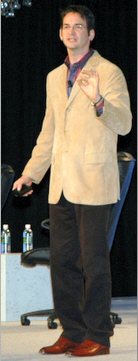A view into Google's inner workings


In other words, working at Google is about openness, flatness and transparency, which is pretty much the opposite of the company’s interaction with the outside world.
When asked about Google’s lack of transparency and conversation beyond its property borders, Merrill said, “We release a lot of products in beta--that’s the way we understand to interact with our clients.” A bit of Schwab talk (“client”) in that response, but the point is that Google is enlightened on the inside but closed to the outside. As a public company in a competitive marketplace, Google has to be circumspect in its public face, but Merrill’s answer lacked transparency.
Merrill listed the following attributes of Google’s development culture:
Hire smart people who are nice to work with
Flat management structure
No silos, open communications
Ideas mailing list
20 percent (time spent on personal projects)
Small projects
Iterative design, constant improvement
Server-based deployment (AJAX)
Test, don’t guess
“Innovation doesn’t happen ‘on the way by,’ it must be design into everything we do,” Merrill said. As part of the innovation culture, discussions and decisions are made in public. Data, not intuition, is the coin of the realm, and if there is work that you wouldn’t want to do, get a computer to do it.
Part of Google’s innovation strategy is to keep its employees challenged, and the company does that by moving people from project to project, Merrill said. An average project lasts three months or less, and employees spend only a year to 18 months in one area, Merrill said. The fast churn creates its own set of problems, in maintaining continuity for projects and weaning people from pet projects.
Merrill points to Google’s Project Database as a solution for dealing with rapid change and troop movements. He calls it a reporting system, not a project tracking system, that allows “Googlers” to keep track of what they and others in the company are working on via an email posting of a list of bullet points. "It creates public data, for all to see and come up to speed on projects, and maximizing the opportunity for accidental cross-organizational pollination,” Merrill said. “Everybody from engineering to sales to folks who sweep the floors can read about and create commentary on anything in database."
He noted that the Project Database generates a lot of data, some of which is garbage and some great. “We build expertise in everything or nothing depending on your perspective,” Merrill quipped.
The hiring process similarly depends on an email trail of comments and data via a lightweight application. “We always over hire,” Merrill said, “and everyone is hired by everyone.” An application tracking system coordinates interviews and tracks the data generated in the interviews, storing a trail of each interaction. Then, a committee of people--not the hiring manager—evaluates the information presented in the packaged data trail. “We rely on diverse crowds and data,” Merrill said. You are either in the club or out...
Google’s way to drive innovation and flatten the hierarchy is to give more value to geek talent. “The tech ladder is far more valued than the management ladder,” Merrill said. Performance management across the entire company is open and transparent. “Everything is a 360 [degree] public discussion,” Merrill said. A distributed, public performance management system automates the complete process, requires discussion and provides data and calibration. It interacts with the Project Database, and determines who worked with a particular employee on a project and automatically sends out an email to get feedback. “Geeks care more about recognition by other geeks—they want respect. So we built a culture that systematically devalues managers and systematically revalues engineers,” Merrill said.
As a Greenfield company, Google didn’t have to follow the conventional ways to build a company and its culture. The technology, organizational structure and people are connected and always changing, Merrill said. “We view ourselves as a living experiment, and every quarter we discover what was wrong and try to fix it,” Merrill said.
The grand experiment in building a flat, open, geek-ruled meritocracy in a constant state of flux to encourage innovation may not last. “Clearly, there is a trade-off between classical efficiency and what we do,” Merrill said. “There is an organization tax on what we do. When it becomes negative, it will show and we’ll have to change.” Who is accountable in Google’s flat world and how priorities get set has to be an ongoing concern, as well as everyone potentially being involved in every discussion. It doesn't scale like the machine-oriented part of Google's business, but so far the culture doesn't appear to be in any danger of imploding.